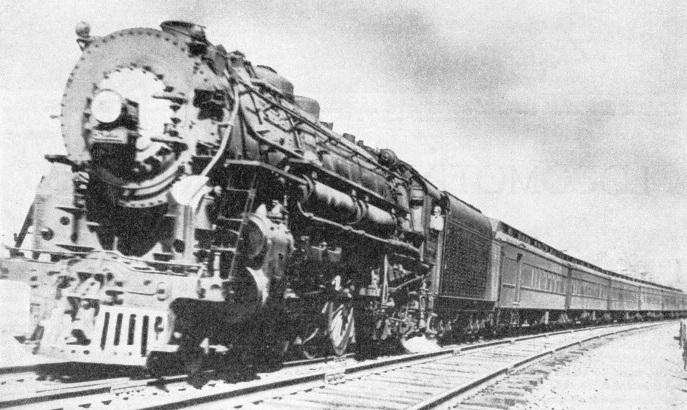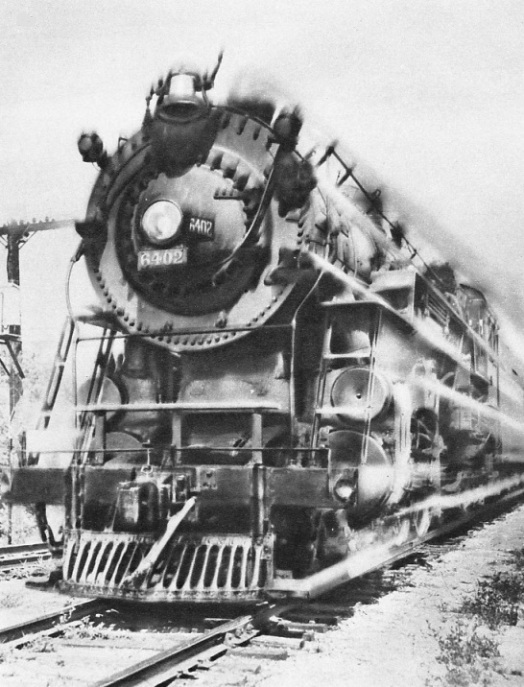
© Railway Wonders of the World 2012-


Locomotive Speed Records
Many Famous Runs -
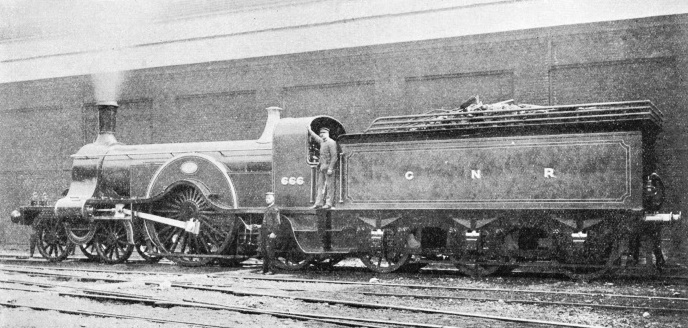
THE GRACEFUL LINES of this Stirling “eight-
There are many strange ideas abroad as to what the steam locomotive has done and can do in the way of speed. From early railway days many “records” have been claimed for steam locomotives which prove, on examination, to have no foundation in fact. The most accurate of apparatus, handled by the most competent observers, is used to establish record speeds in the air or on the motor-
British appetite for high speed was first whetted, probably, by the famous “races” to Scotland which took place in 1888 and 1895. Competition in those days was keen between the West Coast and the East Coast companies for the traffic between London and Scotland. The 1888 race to Edinburgh was precipitated by the fact that the Great Northern, North Eastern, and North British Railways, forming the East Coast route, decided to admit third-
The culmination of the 1895 race occurred during the month of August The two trains concerned were the night expresses leaving Euston and King’s Cross at eight o’clock. Provisional time-
Finally, on August 20, the East Coast express, drawn by Patrick Stirling’s famous “8-
Determined not to be outdone, the London and North Western and the Caledonian Railways, which together formed the West Coast route, put forth their supreme effort on the following night, and brought the Granite City within 8 hours 42 minutes of London over a route nearly seventeen miles longer. A Webb compound engine hauled the train from Euston to Crewe from there the noted 2-
Thus an average of 63.3 miles an hour, including three stops and both Shap and Beattock summits (the latter 1,015 ft above the sea), was maintained over the whole distance of 540 miles. But the train was a very light one of three coaches only, weighing seventy tons, while the East Coast train was but little over 100 tons in weight, corresponding to only two or three corridor coaches respectively of modern British stock.
The next similar contests took place in 1903 and 1904. when certain of the Transatlantic shipping companies, the American Line in particular, began the practice of making a call on the east-
It was on May 9, 1904, that the most startling speed achievement was staged, and the Great Western Railway was responsible. The Westbury route had not then been brought into use, so that the journey was over the original route of 245¾ miles, via Bristol, where a stop of 3¾ minutes was made to detach the mails for the North of England. Notwithstanding the exceptionally heavy gradients west of Newton Abbot, the whole journey was completed in 3 hours 46¾ minutes. It was on this occasion that the engine, “City of Truro”, is claimed to have touched 102.3 miles an hour in the descent of Wellington bank, near Taunton; the 118½ miles from Bristol to Paddington were run by the old Dean single-
FAMED THROUGHOUT THE WORLD. The American crack express, “The Twentieth Century Limited”, of the New York Central Railroad ran daily between New York and Chicago, a distance of 961 miles, in seventeen and three-
Nearly thirty years then elapsed before any further record-
No other steam train has ever run from start to stop at over 80 miles an hour either before or since. And until 1935 no Diesel-
“Tregenna Castle” was the engine, with a six-
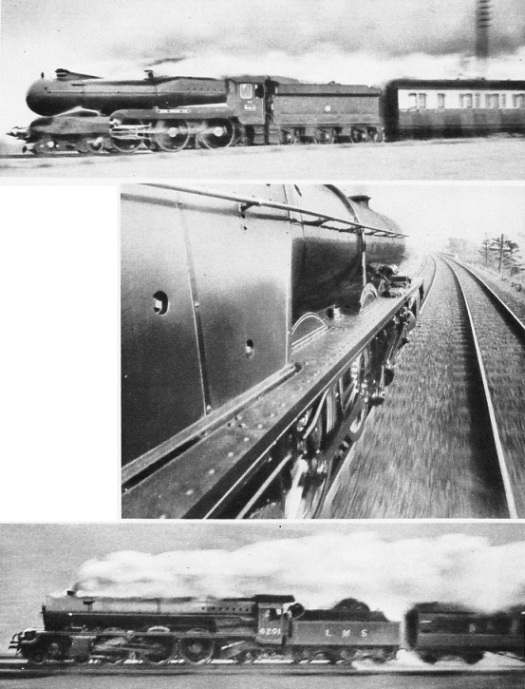 STREAMLINING ON A STANDARD LOCOMOTIVE. The Great Western Railway’s “King Henry VII”, adapted for an attempt on the speed record in connexion with the Company’s centenary. This picture shows the train travelling on the Paddington-
STREAMLINING ON A STANDARD LOCOMOTIVE. The Great Western Railway’s “King Henry VII”, adapted for an attempt on the speed record in connexion with the Company’s centenary. This picture shows the train travelling on the Paddington-
PHOTOGRAPHED FROM THE TRAIN. This view of the LMS “Pacific” locomotive “Princess Royal” was taken from a carriage window on the “Royal Scot” express. The “Princess Royal” is the first of the largest passenger locomotive class on the LMS Railway.
REPLENISHING THE WATER SUPPLY. The “Princess Elizabeth”, sister of the “Princess Royal”, at the head of the “Royal Scot” express, taking up water at Dillicar troughs, just south of Tebay, Westmoreland, before climbing the 1 in 75 gradient to Shap Summit.
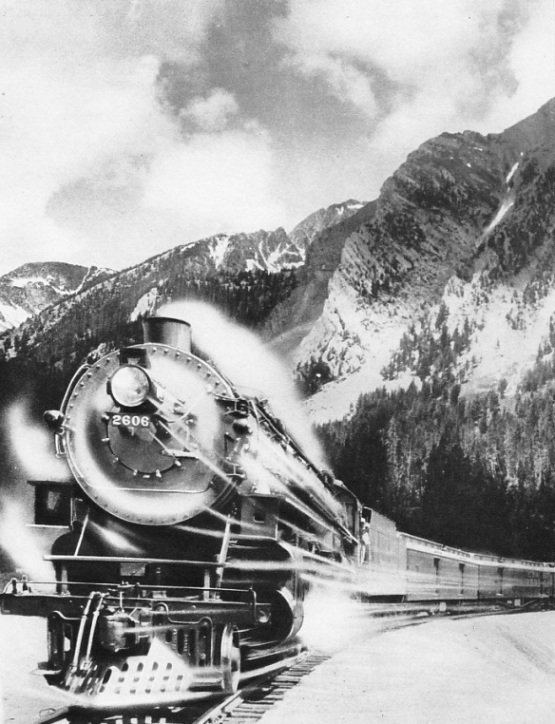
IN THE ROCKY MOUNTAINS. The “North Coast Limited”, the principal express of the Northern Pacific Railway of the United States of America, on the continental divide in the Rocky Mountains, a few miles east of Butte, Montana. The “North Coast Limited” runs between Chicago and Seattle (Washington) and Portland (Oregon). This all-
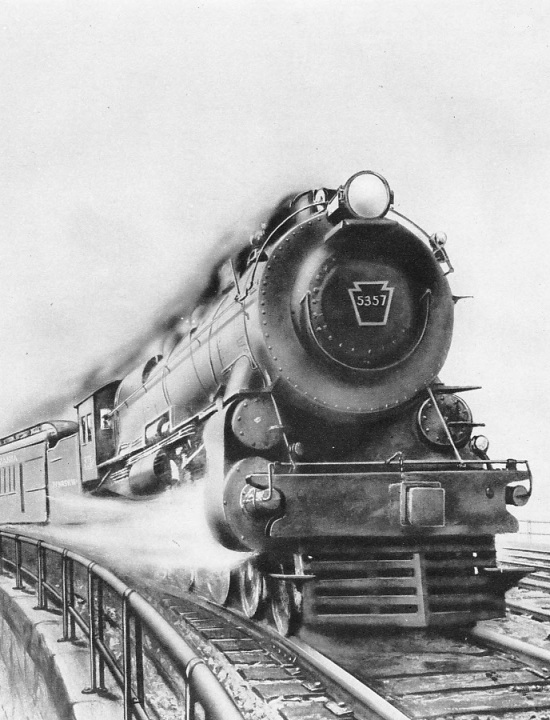
“THE BROADWAY LIMITED”, of the Pennsylvania Railroad, crossing Rochville Bridge, over the Susquehanna River, near Harrisburg, Philadelphia. This all-
three-
RIVALLING THE “CHELTENHAM FLYER”. Engine 6402, of the Chicago, Milwaukee, St Paul and Pacific Railroad, ran the eighty-
Next, the London, Midland and Scottish Railway comes into the field, with a remarkable series of runs made on two consecutive days, September, 19 and 20, 1933, between Euston and Coventry. These trains were chartered by a motor firm to convey parties to and from their Coventry works, and the railway authorities determined that they should have a demonstration of railway speed possibilities at the same time.
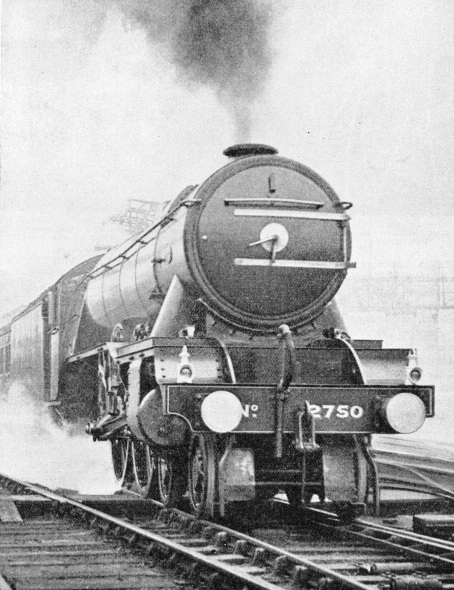 The engines participating were of the 3-
The engines participating were of the 3-
THE WORLD RECORD for steam trains was captured by the LNER engine “Papyrus”, on March 5, of that year, with a top speed of 108 miles an hour, on a run between Newcastle and London.
Another important speed trial was made on April 6, 1934, when the LMS “Pacific” engine “The Princess Royal” was attached to the 5.25 pm express from Liverpool to Euston, and made the run of 152.7 miles from Crewe to Willesden Junction in 134 minutes 37 seconds. The feature of this journey was that. although the maximum speed did not exceed 85 miles an hour, the engine maintained an average of 70.5 miles an hour, with a heavy twelve-
Meanwhile the Americans had not been idle. One of the fastest railway runs in the history of American railways was made in 1905 by the express service of the Philadelphia and Reading Railroad. For many years this service was booked to make the run of 55½ miles from Camden to Atlantic City in 55 minutes -
The next American achievement of note was the the return of Colonel Lindbergh from his historic solo flight across the Atlantic in 1927. It was desired to get the films of his reception at Washington, on his arrival home, to New York in the minimum possible time, and a special was therefore chartered over the Pennsylvania lines. With two coaches only, the run of 224½ miles from Washington to New York was completed in 3 hours 4 minutes, notwithstanding the fact that two stops were made on the way. Four stretches of line, 38, 61, 23, and 66½ miles in length successively, were covered at an average of 80 miles an hour or over; the 66½-
Since then a competition in schedules has been developing between the railways which compete for the traffic between Chicago, Milwaukee, and the “Twin Cities” of St. Paul and Minneapolis. Diesel-
Although the Americans may have claimed to have beaten the Great Western Railway Swindon -
Last of all, there came the remarkable London and North Eastern Railway journeys of November 30, 1934, and March 5, 1935. These were deliberately arranged as the challenge of steam to Diesel propulsion which is being pressed on British railways, following on the successful running of the “Flying Hamburger” rail-
For the Leeds run, on November 30, 1934, a four-
100 Miles an Hour
Of the round journey, perhaps the most amazing feature was that the engine climbed the whole of the last ten miles to Stoke Summit, partly at 1 in 200 and partly at 1 in 178, at an average of 82.5 miles an hour, and went over the top at 81 miles an hour. Down the same bank, in the reverse direction, a maximum of 100 miles an hour was reached. Of the return journey, all made by the one locomotive, no fewer than 250 miles in all were covered at the high average speed of 80 miles an hour.
But these figures were eclipsed by those of March 5, 1935. King’s Cross-
Sheaves of records were amassed on this amazing day. Allowing for the Arksey delays “Papyrus” did the round trip of 536.6 miles at an hour average of 70.4 miles an hour, and covered 500 miles at 72.7 miles an hour; 300 miles exactly out of the total distance covered were reeled off at 80 miles an hour and the climax, in the descent from Stoke Summit to Peterborough, was the feat of covering 12.3 miles at 100.6 miles an hour average, with a fully authenticated maximum of 108 miles an hour. Every one of these achievements. so far as is known, was a world’s record for steam traction.
So far from this trip having been merely a speed “stunt”, the lessons learned were of such value that it was decided to institute in October 1935, a daily four-
This multiplication of records suggests that even the wonderful runs described here may be improved upon in the near future. Both in this country and abroad considerable attention has been given to streamlining.
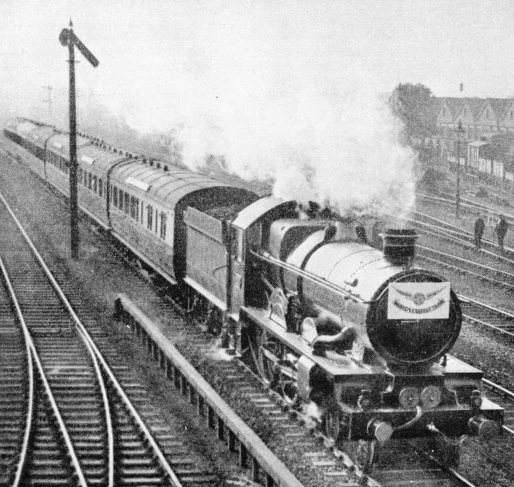
SCHEDULED AT OVER 81 MPH. The world’s fastest regular steam train, the “Cheltenham Flyer” of the Great Western Railway. On June 6, 1932. this express covered the 77.3 miles between Swindon and Paddington in 56 min. 47 sec., at an average speed of 81.8 mph. The maximum was 92.3 mph.
You can read more on “British Express Locomotives”, “Speed Trains of Europe” and
“Speed Trains of North America” on this website.
